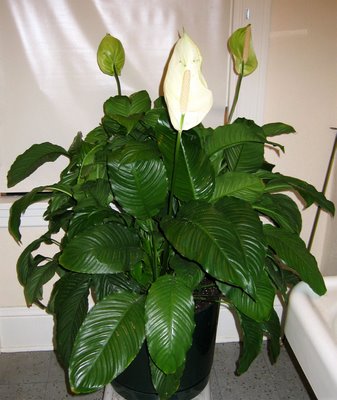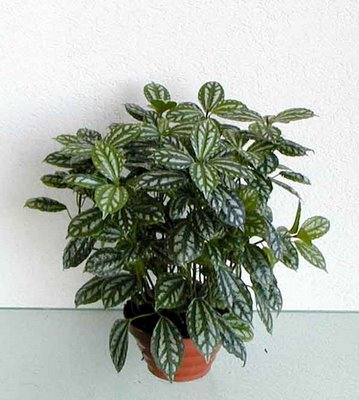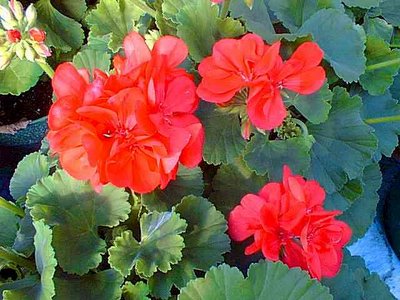Balcony Plants I

Plants in containers need no special care throughout the year. However, they welcome occasional loosening of the soil with a wooden peg, removal of weeds and in dry weather, sufficient watering accompanied by regular feeding in the growing period. Below are a list of easy to grow plants for your balconies.
Easy To Grow Balcony Plants
1. Peace Lily

Common varieties: Spathiphyllum wallisii, Spathiphyllum clevelandii, Spathiphyllum floribunda
S. wallisii grows about 30cm high; the cultivar 'Mauna Loa' attains about twice that size. Both have lance-shaped, glossy leaves borne on separate stalks growing directly from a rhizome. The flower is a broad white spathe surrounding a long white or creamy spadix. It lasts about tow months, gradually turning green.
In summer the plant should be placed in bright filtered or indirect light, but it can stand mild sun in winter. An even temperature of 18 degree celsius all year round is ideal; the plant rests if it is too cold or too warm. Keep up high humidity and spray leaves frequently in the warmer months. Aways allow the top layer of compost to dry out between waterings and feed the plant occasionally throughout the year. Pot on annually, in loam or peat mixture, up to a 20cm pot size. To propagate, divide the rhizome base, taking sections with two or three leaves attached.
2. Miniature Rose

Indoor roses are varieties or hybrids of the dwarf rose rosa chinensis. They make attractive, upright bushes, about 30cm high. The slender stems rarely carry thorns. Flowers may be single or double-petalled, in white, pink, yellow, red or coral.
Miniature roses must have as much alight as possible. Place them in a bright window and if possible, stand them close to a fluorescent light in the evening. They do well in a temperature range from 10 degree celsius to 21 degree celsius and like a fresh, airy atmosphere. They overwinter in cold conditions and can be placed outside. Move them from warm, bright summer light to cool winter shade by stages, for the best future growth. Water moderately during active growth and feed fortnightly. Keep the compost, a soil-based mixture barely moist in winter. Prune back the stems and freshen the compost annually, just before new growth begins.
3. Pilea

There are various forms of pilea, which may be creeping or upright plants. The popular Aluminium plant is pilea cadieri; it grows to about 25cm in height and each leaf is marked with silvery patches between the veins, giving a quilted effect. pilea mollis is more heavily textured and has rich bronze colouring around the leaf veins. Pilea involucrata, also known as the Friendship plant because it is easily propagated, has warm, coppery colouring.
Pileas must never be exposed to direct sun and will adapt to indirect light or partial shade. They prefer to be kept warm and humid, tolerating a 10 degree celsius minimum, but they are badly affected by droughts. Keep the compost moist, with a fortnightly feed from spring to autumn, and less damp in winter. Repot only if necessary -- the plants are shallow-rooting, up to 12.5cm pot. Stem cuttings in spring will root in a peat and sand mixture.
4. Geranium

These fast-growing, bushy plants make a marvellous summer display with their bright flower heads, and many have attractively marked leaves. The rounded, bright green leaves of Zonal Pelargoniums are marked with a dark red band; flowers may be single or double, in light sprays or heavy clusters, white, pink, coral, red or mauve. The Regal Pelargonium flowers earlier and has a shorter season; it has showy, frilled flowers and clustered leaves. Smaller ivy-leaved Geraniums are excellent for tubs or hanging baskets.
Bright light and plenty of sunshine are essential. Provide a moderate environment, dry and airy; do not spray leaves or flowers. Keep compost moist in the active period and feed fortnightly. The plants thrive most vigorously if slightly pot-bound. Stem cuttings root readily in summer and can replace older plants. Prune growth severely in autumn, and allow the plant a cool winter rest.







0 Comments:
Post a Comment
<< Home